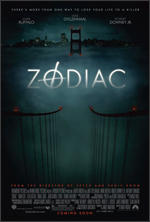| |
2000s |
| |
Benjamin Smoke, Directed by Jem Cohen and Peter Sillen
Brokeback Mountain, Directed by Ang Lee
The Class, Directed by Laurent Cantet
The Dead Girl, Directed by Karen Moncrieff
Deliver Us from Evil, Directed by Amy Berg
Donnie Darko, Directed by Richard Kelly
Eternal Sunshine of the Spotless Mind, Directed by Michel Gondry
Far From Heaven, Directed by Todd Haynes
Ghost World, Directed by Terry Zwigoff
Hedwig and the Angry Inch, Directed by John Cameron Mitchell
In the Bedroom, Directed by Todd Field
Junebug, Directed by Phil Morrison
La Vie en Rose, Directed by Olivier Dahan
The Nomi Song, Directed by Andrew Horn
The Orphanage, Directed by Juan Antonio Bayona
Pan’s Labyrinth, Directed by Guillermo del Toro
The Piano Teacher, Directed by Michael Haneke
A Serious Man, Directed by Joel and Ethan Coen
Songs from the Second Floor, Directed by Roy Andersson
Synecdoche, New York, Directed by Charlie Kaufman
Under Great White Northern Lights, Directed by Emmett Malloy
Where the Wild Things Are, Directed by Spike Jonze
Y Tu Mamá También, Directed by Alfonso Cuarón
Zodiac, Directed by David Fincher |
|
|
Zodiac, Directed by David Fincher
Paramount Pictures, March 2, 2007 (US)
Screenplay: James Vanderbilt, based on the book by Robert Graysmith
Starring: Jake Gyllenhaal, Mark Ruffalo, and Robert Downey, Jr.
Something is wrong.
Histories of ages past, unenlightened shadows cast. Car headlights frame confusion and fear as two teenagers squint into blinding beams of terrible light. This is very wrong. The teenagers know it. Down through all eternity, the crying of humanity. The audience knows it. The foreboding is so damn thick it practically drips off the huge multiplex screen. Nobody says a word or moves an inch in their stadium seat rockers.
What comes next is unexpected, but wholly welcome. It is the sweet taste of relief. Simple, right? The creepy car begins to back up slowly, slowly, before driving off, out of view. The relief is on display everywhere, from the two in the car to the exhaling moviegoers. Bodies that had been absolutely still that are now showing signs of life. Fingers dip back into popcorn bags for the first time since the opening trailers ended.
However, before any buttery handfuls of popped kernels can make their way to salivating tongues, there is an awful screech of tires offscreen, and then the sound of skidding. The car from before is apparently turning around. ’Tis then when the Hurdy Gurdy Man comes singing songs of love. The angry roar from the engine makes it obvious that the car is definitely returning, coming back fast, too fast, back from where it came, back to corner its prey. The headlights are fixed upon the two terrified teenagers once again except this time the stranger gets out of the car and walks briskly towards them. Here comes the roly poly man and he’s singing songs of love. It happens so fast, a gun unloading its chamber, one horrifying bullet after the next, innocence blown to shattered bloody bits in a vicious instant. Anywhere else but here. Anywhere else but here. Hurdy gurdy, hurdy gurdy, hurdy gurdy, gurdy, he sang.
It is a killer beginning, heightened by the accompaniment of a killer song. The audience is sucker-punched by a left-right combination of David Fincher and Donovan. It is a beginning that isn’t easy to watch, downright brutal in fact. But Fincher is up to something. Things are not quite what they seem. And just like that, focus shifts. Maybe this isn’t your older brother’s slasher flick after all. The spotlight isn’t upon the Zodiac killer himself, nor his victims for that matter. This film within a film turns out to be more cerebral, a study in obsession, a study into the side effects that can occur when descending into the dark vortex of madness.
The reporter, the illustrator, the investigator, and even the killer all slip under the influence of obsession in one form or another, submitting themselves to an intoxicating game of cat and mouse. It is a case that needs to be solved. Quickly. Quicker. Quick. A monster needs to be caught. Everyone is trapped: a city, its outskirts, the surrounding communities.
The start of any decade is inherently hopeful, but in the wake of the violent end of the 1960s, perhaps that hope was a bit more exaggerated. In the new old world of serial killers, the Charles Manson family had been caught, and connections between the Tate and LaBianca murders were just beginning to be pieced together. Maybe everyone could breathe a little easier and life could resume regularly scheduled programming even if dead bolts were now as much a requirement as they were reminders. The brutal murders of Richard Speck were in the past. Even as the Vietnam War raged on and the scars of the JFK, MLK, and RFK assassinations left gaping wounds to heal, the start of the decade still held true its promise of hope. Maybe we could recapture what had been taken away, that sense of togetherness and community that fosters friendships over suspicions.
Then comes word of another serial killer at large.
It is easy to see how obsession can take root, less easy to see a way out from its grip. To watch all dimensions of the Zodiac Killer’s story unfold makes you leave the theater remembering what it is or what it can be that makes experiencing a story on the big screen the only possible way to really experience it at all. Seeing the panoramic shots of San Francisco juxtaposed with the blanket of fear that stretches like fog over the expanse of a great city, seeing the larger-than-life story that plays out inside the minds and souls of men, it is all something deserving grand treatment. David Fincher is, as always, more than up to the task.
-G

|
|
 |

